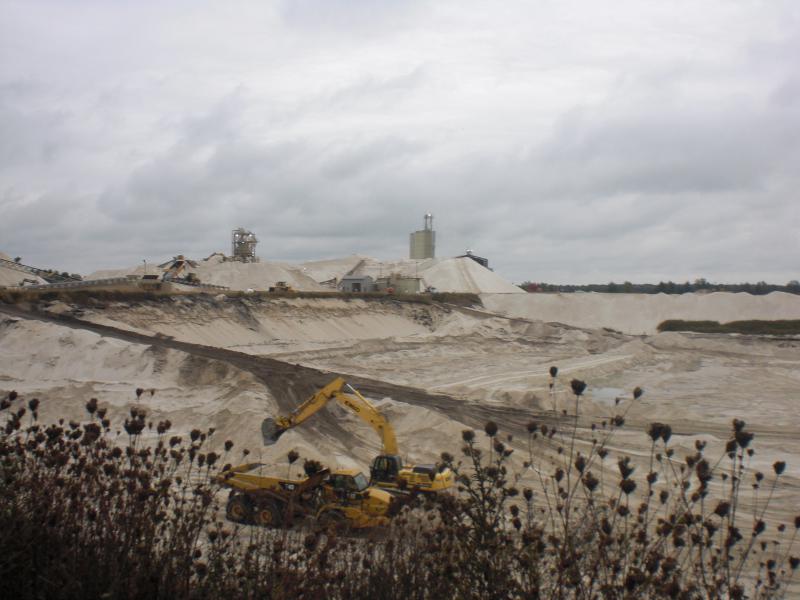After years of calling on the Department of Natural Resources (DNR) to do a study of the impacts of frac-sand mining around Wisconsin, our decision-makers listened. The draft study is out and the DNR is taking public comments about it. Comments are due by Monday, August 22, 2016. Click here for the alert.
 The purpose of the strategic analysis is to provide information for those making decisions about frac-sand mining permits, like Town Boards, County Boards, and the state DNR. It is also meant to identify best practices and various needs for further information. The analysis looked at the environmental impacts as well as the health and economic impacts and is meant to help decision-makers (local and statewide) when making decisions on frac-sand mining proposals.
The purpose of the strategic analysis is to provide information for those making decisions about frac-sand mining permits, like Town Boards, County Boards, and the state DNR. It is also meant to identify best practices and various needs for further information. The analysis looked at the environmental impacts as well as the health and economic impacts and is meant to help decision-makers (local and statewide) when making decisions on frac-sand mining proposals.
Given the recent, hostile, political atmosphere for studying environmental impacts, this is an important first step. Wisconsin went from having a handful of small frac-sand operations to over 100. This onslaught of proposals has left many communities unsure about the impacts (good and bad) of frac-sand mining. The analysis was a critical first step in providing information to communities about the impacts of frac-sand mining.
The best comments always tell your personal story and the impacts you have personally experienced by frac-sand mining. You are the only person that can deliver that testimony. You should state your concerns dust, air pollution, increased truck traffic (or other impacts on your quality of life), land destruction, water contamination etc.
Here are some additional points you can make:
- Fine particulate matter: the biggest flaw in the study is the analysis of impact of frac-sand mining on fine particulate matter (PM2.5). PM2.5 is the term for air pollution with particles small enough to, among other things, damage the lungs. This can cause health concerns, including respiratory and cardiovascular concerns.
Dr. Crispin Pierce of UW-Eau Claire measured the levels of particulate matter near frac-sand mines. His study found that particulate matter pollution near frac-sand mining operations was higher than areas not near a frac-sand mine. He also found that the pollution levels were higher than the Environmental Protection Agency (EPA)’s standard. However, the DNR’s analysis uses a lack of information to conclude that frac-sand mining does not contribute to increases in PM2.5. The DNR should do more to study fine particulate matter to fully understand the impact frac-sand mining has on air pollution. The DNR should not permit any additional frac-sand mining proposals until this has been further studied. - Water pollution: The strategic analysis did recognize the potential for acid mine drainage and other water pollution concerns from frac-sand mining and processing. The analysis described the concentrated levels of heavy metals in wastewater ponds and the possibility of those metals getting into the groundwater and impacting private wells. The DNR should build on what is in the analysis and further study the impacts of frac-sand mining on groundwater. The DNR should also not permit frac-sand mines unless it can ensure there will be no groundwater contamination. More studies needs to be done about the impacts on nearby waterways, including wetlands, lakes, and rivers.
- Community Impacts: The study downplayed the some of the socioeconomic impacts as well. It found that limited impacts on farmland. It also downplays the impact to roads and other infrastructure.
- Independent studies needed: The Strategic Analysis relies too much on studies based on voluntary monitoring and industry-funded studies at industrial sand facilities. The result is that the analysis stresses almost all instances of ambiguity or insufficient information and then resolves them in favor of Frac sand mining. Independent analysis is needed for results to be credible.
The study makes one thing clear: we still don’t know enough about frac-sand mining. The DNR needs to continue studying the impacts, especially on air pollution, and should hold off on issuing any new permits until we have conclusive data.
Submit your public comments to the DNR by August 22, 2016.
You can send your comments to DNRISMSA@wisconsin.gov or to:
SIM SA Coordinator,
WDNR OB/7,
P.O. Box 7921,
Madison, WI 53707-7921